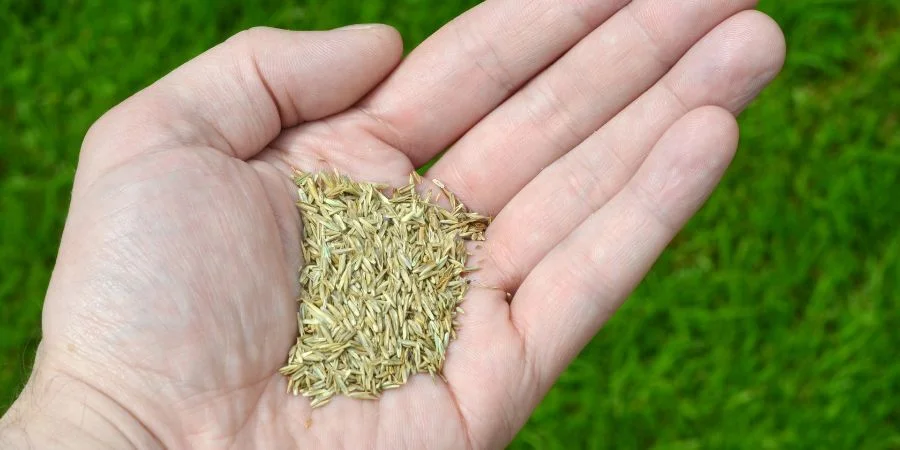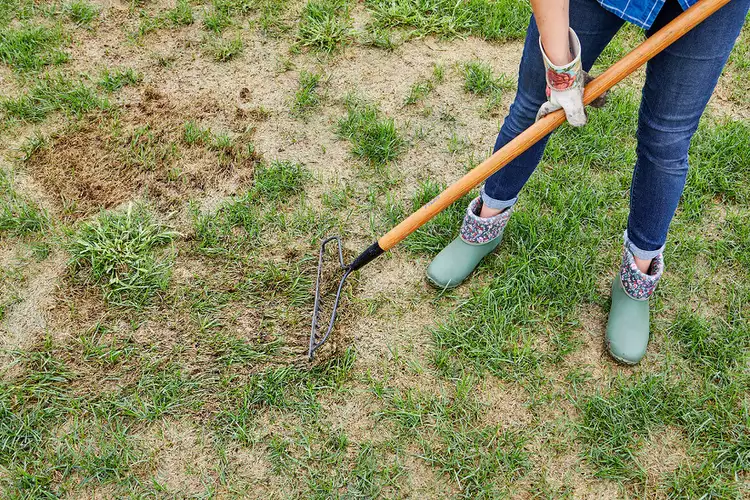Here is How To Get Rid of Snow Mold From Your Lawn
Last Updated on January 14, 2025 by Duncan
Snow mold is a fungal disease that develops in lawns that are constantly wet and moist over extended periods of time. As the name says, it most commonly occurs after the winter as the snow melts in your yard.
Under the snow, two varieties of snow molds, gray and pink, become active.
Grey snow mold is the less harmful of the two. It only affects the grass stems, not the roots. This mold does not regrow easily after treatment.
The typhula blight, on the other hand, creates underground structures (sclerotia) that can survive the summer. To prevent the emergence of grey snow mold the following year, you must completely cure it.
Pink snow mold (Fusarium patch) is extremely hazardous to grass. This fungus attacks grass roots and blades. It leaves bands of dead, barren dirt on your lawn.
This fungal infection appears fuzzy and rosy in color.
The fungus grows in well-defined circles and does not require a lot of snow to thrive. Pink snow mold is abundant in colder temperate zones and thrives in cool, moist conditions.
How do I get rid of snow mold on my lawn?
If you have seen mold on your lawn, you must be wondering how to get rid of it, right? When you discover areas of snow mold on your grass, no fungicide will help.
The best and simplest method for removing snow mold is to gently rake the affected grass to release any snow mold and let the soil and grass dry.
As previously stated, gray snow mold only affects the grass, thus, when the warmer months arrive, your grass should recover again.
As long as you’ve raked the mold off the grass to keep it from spreading, you are good to go.
Pink mold, on the other hand, will necessitate raking and reseeding of the affected regions. Allow for a period of dry weather to completely examine the damage to your lawn. Then, plant grass seeds in the bare patches left behind.
Ways to prevent snow mold on your lawn
Prevention is always better than cure, so instead of spending time trying to get rid of mold, you should work on preventing it from developing in the first place. How do you do it? Here is a guide on how to go about it:
Mow the lawn before winter
Long grass blades will bend and fold as snow accumulates on top of them during the winter. The folded grass will collect moisture and hasten the growth of snow mold. To avoid this, mow your lawn below 2.5-3′′ to keep the fungus at bay.
Rake the leaves before snow falls.
Leaves and trash in your yard will hold moisture and slow snow melting. When you clear your grass, you will play a vital role in preventing snow mold growth.
Follow balanced fertilization practices.
This calls for you to avoid nitrogen at least six weeks before frost season and use potassium and phosphorus in soils. Additionally, you should avoid synthetic and organic mulches and limit thatch formation to less than 3/4 of an inch in thickness.
Avoid large piles of snow.
Make sure your snow is evenly distributed and does not accumulate in huge mounds for extended periods.
Shoveling the snow and minimizing large piles will help guarantee that specific areas are not overly affected by snow mold,, which will work to your advantage.
Plant more resistant grass species
Though no grass variety is immune to mold, some species are more resistant to infestation.
Tall fescue and fine-leaved fescue grasses, for example, are less susceptible to fungal infestation.
Aside from that, Delray perennial ryegrass, red, and chewings fescue grasses are resistant to snow mold, so these are some of the best ones to go for.
Bluegrass and bentgrass are the most susceptible to fungal infection, and planting these will raise the likelihood of snow mold infection on your lawn, so avoid them.
What does snow mold look like on a lawn?
Snow mold presents itself as circular or irregularly shaped gray, pink, or brown patches in the lawn that can range in size from an inch or two across to more than a foot or more.
Mycelia, or fuzzy gray strings, may stretch across and out of the area when the snow melts.
The circles can die and leave brown areas on otherwise green lawns. The brown blotches often heal as the season advances (unless infected with pink snow mold, which can destroy grass crowns, roots, and leaves).
Will my grass recover from snow mold?
Yes, your grass will generally recover. Mold typically does not harm the grass since it does not affect the plant’s roots.
When the grass is dry and not frozen on the surface in the spring, lightly rake it to lift up the blades and promote air circulation.
The problem usually resolves itself as the grass grows in response to warmer weather.
What fungicide is good for snow mold?
If snow mold has become a nuisance in your lawn, apply BioAdvanced Fungus Control for Lawns.
For the best outcome, apply the fungicide after your last mowing and before the first major snowfall.


